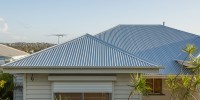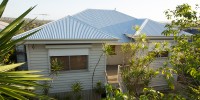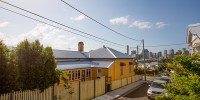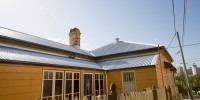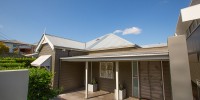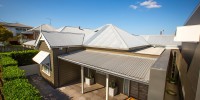Asbestos Removal
Asbestos is a construction material that can potentially have serious health effects. Recently, use of asbestos has been banned, but prior to that, it has been an element of different products that have been used in industry and the community since the 1940s up to the late part of the 1980s.
The main problem with asbestos is that when it gets broken or disturbed, it releases minute fibres that go airborne, and when that happens people around will be at risk of getting lung diseases.
Asbestos, of all kinds, do break into very small fibres. These are very small microscopic fibres, some of which can only be identified with a microscope and others that can be smaller up to 700 times than a piece of human hair. This miniature size of asbestos fibres is responsible they can stay suspended in the air hours after they were released.
One positive factor that goes in favor for asbestos is that it is an indestructible material. Asbestos is heat and chemical resistant and considered to be the best insulator that can be used.
Different Types of Asbestos
There are three common types of asbestos:
- chrysotile – also known as white asbestos and it belongs to the serpentine group
- crocidolite – or the blue asbestos that belongs to the amphibole group
- amosite – called as either grey or brown or asbestos that belongs to the amphibole group
There are also two specific types of ACM’s or asbestos-containing materials: Bonded and Friable asbestos.
Bonded asbestos
The bonded asbestos is mostly found in products like asbestos cement sheeting, which is a common building material during the 1940s to the late part of 1980s.
Products containing bonded asbestos include:
- imitation brick cladding
- profiled sheets that are used on walls and roofs and flat sheets
- roof shingles
- water pipes
- plaster patching compounds
- vinyl floor tiles
- textured paint
- friction products (disc pads, elevator brakes, brake shoes or clutch housings)
Starting July 1 of 2006, the removal of two or more bonded asbestos can be performed only by a ‘B’ class license holder. These licenses are only issued to professionals that can prove their familiarity with procedures and practices involved in bonded asbestos removal.
Friable asbestos
Friable asbestos stands up to its name, as it is a kind of asbestos that is highly friable even by hand.
Common products with friable asbestos include:
- acoustic plaster soundproofing
- sprayed on fireproofing/thermal insulation/soundproofing
- thermal insulation (not sprayed on).
Under the present law, all removal services for friable asbestos can only be performed by a certified asbestos removal expert who has been issued with the appropriate ‘A’ class license.
Where would you find asbestos?
Materials containing asbestos are usually installed in buildings, homes and workplaces that were built prior to the 1990s. It is also possible that some structures built after 1990 are constructed with asbestos materials.
It is usually very tricky to recognize the asbestos presence by sight, and the only means to make sure is to get enough samples and have them laboratory tested.
Workplaces
From the 1940s onwards, most workplaces were constructed using asbestos based materials. During its heyday, asbestos can be found in different building materials like cement sheeting, insulators, filtering materials and fire retardant.
Residential Buildings
In Queensland, bonded asbestos was commonly used from 1940 until the late part of 1980s. These materials were ideal for manufacturing flat and corrugated sheets, which in turn were used for walls and roofing.
It is believed that acoustic or thermal insulation that were used in homes during that time may contain friable asbestos, as well.



